Sirajuddin Haqqani
Reported deputy emir; head of the Quetta Shura; interior minister of the Taliban government
Operational commander
The Taliban seized power in Afghanistan in August 2021 after previously leading a violent insurgency in Afghanistan and Pakistan. The group is closely affiliated with al-Qaeda.
April 18, 2025: A BBC News investigation reveals that, following their August 2021 takeover of Kabul, the Taliban gained access to one million weapons and pieces of military equipment that was mostly funded by the United States. Half a million weapons were either lost, sold, or smuggled to militant groups, including al-Qaeda affiliates such as TTP, the Islamic Movement of Uzbekistan, and the East Turkestan Islamic Movement. The weapons cache included American-made firearms, such as M4 and M16 rifles. According to the U.S. government, $85 billion of advanced weaponry was abandoned in Afghanistan following U.S. withdrawal from the country.Yasin Rasouli and Zia Shahreyar, “US weapons left in Afghanistan sold to militant groups, sources tell BBC,” BBC News, April 18, 2025, https://www.bbc.com/news/articles/cr78nkg548lo.
The Taliban (Pashto for “students”) are the predominant umbrella group for the Afghan insurgency, including the semi-autonomous Haqqani network. (The Taliban’s offspring across the border, the Pakistani Taliban, share the ideology and objectives of its namesake but operate independently and focus on overthrowing the Pakistani government.) January 2018 estimates by Afghan and U.S. officials gauged that the Taliban included at least 60,000 fighters, up from 2014 U.S. estimates of 20,000 fighters.Courtney Kube, “The Taliban is gaining strength and territory in Afghanistan,” NBC News, January 30, 2018, https://www.nbcnews.com/news/world/numbers-afghanistan-are-not-good-n842651. These forces have allowed the Taliban to remain a credible fighting force with the ability to win and hold territory. According to a U.N. report released in September 2015, the Taliban had reclaimed more territory in Afghanistan by that time than at any point since the 2001 U.S.-led coalition invaded in response to the September 11 attacks.Rod Nordland and Joseph Goldstein, “Afghan Taliban’s Reach Is Widest since 2001, U.N. Says,” CNBC, October 11, 2015, http://www.cnbc.com/2015/10/11/new-york-times-digital-afghan-talibanas-reach-is-widest-since-2001-un-says.html. By September 2017, the Taliban reportedly controlled or contested up to 45 percent of Afghanistan.Bill Roggio and Alexandra Gutowski, “LWJ Map Assessment: Taliban controls or contests 45% of Afghan districts,” Long War Journal, September 26, 2017, https://www.longwarjournal.org/archives/2017/09/lwj-map-assessment-taliban-controls-or-contests-45-of-afghan-districts.php. According to an October 2018 report by the Special Inspector General for Afghanistan Reconstruction’s (SIGAR), the Taliban controlled more territory in Afghanistan than it had at any other point since 2001. SIGAR reported that the Afghan government controlled or influenced just 55.5 percent of the country, the lowest level reported since 2015 when the government controlled 72 percent.“Quarterly Report to the United States Congress,” Special Inspector General for Afghanistan Reconstruction, October 30, 2018, https://www.sigar.mil/pdf/quarterlyreports/2018-10-30qr.pdf; Kara Fox, “Taliban control more territory in Afghanistan than at any point since 2001, US inspector says,” CNN, November 1, 2018, https://www.cnn.com/2018/11/01/middleeast/afghanistan-report-taliban-gains-control-intl/index.html. The Taliban have continued to attack and capture territory across Afghanistan. In the month and a half after the United States began its withdrawal from Afghanistan on May 1, 2021, the Taliban captured at least 27 districts across Afghanistan.Shamil Shams and Masood Saifullah, “Afghanistan: District after district falls to the Taliban,” Deutsche Welle, June 17, 2021, https://www.dw.com/en/afghanistan-district-after-district-falls-to-the-taliban/a-57939556. In the SIGAR quarterly report released on July 30, 2021, it was reported that the Taliban controlled more than 210 districts by July 21, 2021.“July 30, 2021. Quarterly Report to Congress,” Special Inspector General for Afghanistan Reconstruction, July 30, 2021, https://www.sigar.mil/pdf/quarterlyreports/2021-07-30qr.pdf.
Afghan security forces have suffered immense casualties throughout the war. In an interview on December 4, 2018, U.S. Central Command commander, Lieutenant General Kenneth McKenzie, stated that Afghan “losses are not going to be sustainable.”Idrees Ali, “Afghan security forces' deaths unsustainable: U.S. military official,” Reuters, December 4, 2018, https://www.reuters.com/article/us-usa-afghanistan-military/afghan-security-forces-deaths-unsustainable-us-military-official-idUSKBN1O32CS. In January 2019, Afghan President Asraf Ghani claimed that 45,000 Afghan security personnel had been killed since 2014, nearly double that of previous estimates.“Afghanistan's Ghani says 45,000 security personnel killed since 2014,” BBC News, January 25, 2019, https://www.bbc.com/news/world-asia-47005558. Later that month, U.S. Special Representative for Afghanistan Zalmay Khalilizad met with representatives of the Taliban in Doha, Qatar for six days of negotiations around a “comprehensive ceasefire” that would be the first step in an overall negotiated peace.Ehsan Popalzai and Kara Fox, “US-Taliban peace talks in Doha a 'significant step',” CNN, January 26, 2019, https://www.cnn.com/2019/01/27/asia/us-taliban-afghan-peace-talks-doha-intl/index.html. On January 28, 2019, the U.S. government and Taliban reportedly agreed to a framework for a peace agreement to end the war in Afghanistan that would include the Taliban preventing “Afghanistan from ever becoming a platform for international terrorist groups or individuals” in return for a U.S. military withdrawal.Kylie Atwood and Nic Roberston, “US and Taliban agree in principle to framework for peace deal, US envoy says,” CNN, January 28, 2019, https://www.cnn.com/2019/01/28/politics/us-taliban-peace-negotiations-intl/index.html. The Taliban delegation then met with Afghan politicians on February 4 in Moscow, Russia, where the two parties discussed a broad plan for ending the war.Andrew Higgins and Mujib Mashal, “Taliban Peace Talks in Moscow End With Hope the U.S. Exits, if Not Too Quickly,” New York Times, February 6, 2019, https://www.nytimes.com/2019/02/06/world/asia/taliban-afghanistan-peace-talks-moscow.html?module=inline.
The Taliban’s current leader, announced in May 2016, is Haibatullah Akhundzada.Shereena Qazi, “Afghan Taliban: Haibatullah Akhunzada Named New Leader,” Al Jazeera, May 25, 2016, http://www.aljazeera.com/news/2016/05/afghan-taliban-haibatullah-akhunzada-leader-160525045301080.html;
“Profile: New Taliban Chief Mawlawi Hibatullah Akhundzada,” BBC News, May 26, 2016, http://www.bbc.com/news/world-asia-36377008;
Mushtaq Yusufzai, Fazul Rahim, and Wajahat S. Khan, “ Haibatullah Akhundzada Named New Leader of Afghan Taliban,” NBC News, May 25, 2016, http://www.nbcnews.com/news/world/taliban-confirm-death-leader-u-s-strike-announce-replacement-n579921;
Sune Engel Rasmussen and Jon Boone, “Afghan Taliban appoint Mullah Haibatullah Akhundzada as new leader,” Guardian (London), May 25, 2016, https://www.theguardian.com/world/2016/may/25/taliban-new-leader-death-confirm-mullah-mansoor-haibatullah-akhundzada. The Taliban were founded in 1994 by Mullah Mohammed Omar in Kandahar to impose a puritanical Islamic order on Afghanistan. The Taliban’s roots can be traced to the Pakistani-trained mujahideen who fought against the Soviet occupation of Afghanistan. The predominantly Pashtun tribesmen that comprised the Taliban quickly consolidated power by force throughout Afghanistan and, in 1996, seized control of the capital, Kabul. The “Emirate of Afghanistan,” as the Taliban refer to their domain, was born. With generous financial support from Saudi Arabia and Pakistan, especially the latter’s Inter-Services Intelligence (ISI) agency, the Taliban enforced a strict code of sharia (Islamic law) and harbored al-Qaeda and other jihadist organizations. The Taliban-run government in Afghanistan was recognized by only three countries: Pakistan, Saudi Arabia, and the United Arab Emirates (UAE).
While the Taliban hosted al-Qaeda, Osama bin Laden’s group ran training camps and planned and executed numerous terrorist attacks, including the multiple airplane hijackings and strikes against the United States on September 11, 2001. In the aftermath of 9/11, the Taliban rejected a U.S. ultimatum to turn over bin Laden and kick out al-Qaeda. In response, the U.S. and allied countries invaded Afghanistan and swiftly deposed the Taliban government.
Since being driven out of Kabul, the Taliban have operated as an insurgent force in both Afghanistan and Pakistan, attempting to expel NATO forces from Afghanistan and defeat the democratically elected Afghan government. Attacks on Afghanistan’s security forces have increased as Western forces have begun to withdraw from the country in recent years. As government authority has weakened, Taliban forces have filled the vacuum. By December 2015, vast swathes of Helmand Province had fallen to the Taliban. U.S. Special Operations forces responded by taking aggressive steps to halt this advance.David Jolly and Taimoor Shahdec, “Afghan Province, Teetering to the Taliban, Draws In Extra U.S. Forces,” New York Times, December 13, 2015, http://www.nytimes.com/2015/12/14/world/asia/afghan-province-teetering-to-the-taliban-draws-in-extra-us-forces.html. One year later, according to the Pentagon, the Taliban retained control of less than 10 percent of the Afghan population, while another roughly 26 percent remained contested.Jamie McIntyre, “US general Says Afghan forces ‘Prevailing’ in Fight against Taliban,” Washington Examiner, December 2, 2016, http://www.washingtonexaminer.com/us-general-says-afghan-forces-prevailing-in-fight-against-taliban/article/2608731. As of October 2018, though, the Afghan government controlled or influenced just 55.5 percent of the country.“Quarterly Report to the United States Congress,” Special Inspector General for Afghanistan Reconstruction, October 30, 2018, https://www.sigar.mil/pdf/quarterlyreports/2018-10-30qr.pdf; Kara Fox, “Taliban control more territory in Afghanistan than at any point since 2001, US inspector says,” CNN, November 1, 2018, https://www.cnn.com/2018/11/01/middleeast/afghanistan-report-taliban-gains-control-intl/index.html. On February 29, 2020, U.S. and Taliban representatives meeting in Doha, Qatar, signed an agreement for a staggered U.S. troop withdrawal in exchange for a Taliban commitment to prevent terror groups such as al-Qaeda and ISIS from using Afghanistan as a base from which to plot against the United States. The Taliban also agreed to negotiate a permanent ceasefire with other Afghan militants and the Afghan government.Asad Hashim, “Pakistan warns US of ‘spoilers’ on US-Taliban deal in Afghanistan,” Al Jazeera, March 1, 2020, https://www.aljazeera.com/news/2020/03/pakistan-warns-spoilers-taliban-deal-afghanistan-200302093650382.html; Matthew Lee and Kathy Gannon, “US and Taliban sign deal aimed at ending war in Afghanistan,” Associated Press, February 29, 2020, https://apnews.com/491544713df4879f399d0ff5523d369e; “Agreement for Bringing Peace to Afghanistan between the Islamic Emirate of Afghanistan which is not recognized by the United States as a state and is known as the Taliban and the United States of America,” U.S. Department of State, February 29, 2020, https://www.state.gov/wp-content/uploads/2020/02/Agreement-For-Bringing-Peace-to-Afghanistan-02.29.20.pdf. The Afghan government voiced immediate objections a clause calling for a prisoner swap with the Taliban as a precondition for negotiations.“Susannah George and Dan Lamothe, “Afghan government objects to elements of U.S.-Taliban peace deal,” Washington Post, March 1, 2020, https://www.washingtonpost.com/world/asia_pacific/afghan-government-questions-aspects-of-us-taliban-peace-deal/2020/03/01/0a973228-5a68-11ea-8efd-0f904bdd8057_story.html.
The Taliban’s wing in Pakistan has repeatedly attacked the Pakistani government and the country’s civilians. Such attacks include the October 2012 shooting of 15-year-old education activist Malala Yousafzai as well as the December 2014 massacre of 132 children at an army-run school in Peshawar. On January 20, 2016, the Taliban claimed responsibility for two attacks that together claimed over 20 lives: one targeting a university near Peshawar, and the other on a news crew in Kabul.David Jolly and Jawad Sukhanyar, “Taliban Suicide Bomber Strikes Packed Bus in Kabul,” New York Times, January 20, 2016, https://www.nytimes.com/2016/01/21/world/asia/afghanistan-kabul-suicide-bombing.html?mcubz=0&_r=0;
Declan Walsh, Ihsanullah Tipu Mehsud, and Ismail Khan, “Taliban Attack at Bacha Khan University in Pakistan Renews Fears,” New York Times, January 20, 2016, https://www.nytimes.com/2016/01/21/world/asia/bacha-khan-university-attack-charsadda.html?mcubz=0. In August 2016, the Taliban forged a ceasefire with ISIS after more than a year of intense combat between the radical Islamist groups.Jessica Donati and Habib Khan Totakhil, “Taliban, Islamic State Forge Informal Alliance in Eastern Afghanistan,” Wall Street Journal, August 7, 2016, http://www.wsj.com/articles/taliban-islamic-state-forge-informal-alliance-in-eastern-afghanistan-1470611849.
Senior American generals have accused Russia of arming the Taliban. General Curtis Scaparrotti, NATO’s Supreme Allied Commander, Europe and the commander of U.S. European Command, warned in March 2017 that “I've seen the influence of Russia of late—increased influence in terms of association and perhaps even supply to the Taliban.”Phil Stewart and Idrees Ali, “Russia May Be Helping Supply Taliban Insurgents: U.S. General,” Reuters, March 23, 2017, http://www.reuters.com/article/us-usa-afghanistan-russia-idUSKBN16U234. Likewise, the top American commander in Afghanistan, General John Nicholson, said in April 2017 that Russia is providing weapons to the Taliban.“U.S. General Suggests Russia Arming Taliban,” Associated Press, April 24, 2017, https://apnews.com/75ea46b808e7448ebf3b54a681243011/The-Latest:-US-general-suggests-Russia-arming-Taliban. Taliban officials claim that the group has had prominent contacts with Russia since at least 2007, but that Russia’s role with respect to the Taliban does not go beyond “moral and political support.”Phil Stewart and Idrees Ali, “Russia May Be Helping Supply Taliban Insurgents: U.S. General,” Reuters, March 23, 2017, http://www.reuters.com/article/us-usa-afghanistan-russia-idUSKBN16U234. Russia denies that it is aiding the Taliban, claiming that Moscow is simply trying to get the group to engage in diplomatic negotiations.Phil Stewart and Idrees Ali, “Russia May Be Helping Supply Taliban Insurgents: U.S. General,” Reuters, March 23, 2017, http://www.reuters.com/article/us-usa-afghanistan-russia-idUSKBN16U234.
In July 2018, U.S. and Taliban officials began discussions on peace talks to end the war in Afghanistan with the understanding that the Taliban and Afghan government should lead the process.Jessica Donati and Dion Nissenbaum, “U.S. Envoy, Taliban Officials Meet to Discuss Afghan Peace Talks,” Wall Street Journal, July 25, 2018, https://www.wsj.com/articles/u-s-envoy-taliban-officials-meet-to-discuss-afghan-peace-talks-1532547118?mod=article_inline. The Qatari government agreed to mediate between the Taliban and the Afghan government. By April 2019, the United States and Taliban had reached a framework agreement that included a U.S. withdrawal from Afghanistan, but talks between the Taliban and the Afghan government had stalled.Craig Nelson and Ehsanullah Amiri, “Afghan Peace Talks Abruptly Stall Over Guest List to Doha Meeting,” Wall Street Journal, April 18, 2019, https://www.wsj.com/articles/afghan-peace-talks-stall-after-taliban-objects-to-guest-list-11555572767. In February 2020, U.S. and Taliban negotiators reached a preliminary deal that demanded a reduction in violence from the insurgent camp in exchange for a drawdown of U.S. troops in Afghanistan. The United States agreed to draw its forces down from 13,000 to 8,600 in the next three to four months, with the remaining U.S. forces withdrawing in 14 months. In exchange, the Taliban agreed to renounce al-Qaeda and prevent al-Qaeda and other groups from using Afghanistan as a base for terrorism against the United States. The Taliban also agreed to negotiate a permanent ceasefire with other Afghan militants and the Afghan government. The U.S. troop drawdown is dependent on the Taliban maintaining its commitments. The agreement also called for permanent ceasefire and power-sharing talks that March between Afghan militant groups as well as between the Taliban and the Afghan government.Mujib Mashal, “Taliban and U.S. Strike Deal to Withdraw American Troops From Afghanistan,” New York Times, February 29, 2020, https://www.nytimes.com/2020/02/29/world/asia/us-taliban-deal.html.
Despite the agreement, the Taliban have continued to direct their attacks toward Afghan security forces.Rahim Faiez, “Afghan officials: Taliban attacks on checkpoints kill 29,” Associated Press, April 20, 2020, https://apnews.com/273a7ea4166e47f8f7a6824e584013d9. An April 2020 report by the U.S. Office of the Special Inspector General for Afghanistan Reconstruction (SIGAR) called Taliban attacks in March “above seasonal norms.”Courtney Kube, “Watchdog: NATO won't release Taliban attack totals while U.S. negotiates Afghan peace deal,” NBC News, May 1, 2020, https://www.nbcnews.com/politics/national-security/watchdog-nato-won-t-release-taliban-attack-totals-while-u-n1197006. At the same time, NATO’s Resolute Support mission noted that the Taliban had refrained from targeting coalition forces but had increased attacks on Afghan forces.Sharif Hassan and Susannah George, “Taliban attacks in Afghanistan surge after U.S. peace deal, inflicting heavy casualties,” Washington Post, May 1, 2020, https://www.washingtonpost.com/world/asia_pacific/taliban-attacks-in-afghanistan-surge-after-us-peace-deal-inflicting-heavy-casualties/2020/04/30/1362fb40-88c0-11ea-80df-d24b35a568ae_story.html. A May 2021 report to the U.N. Security Council by an Afghanistan monitoring team concluded the “Taliban’s messaging remains uncompromising, and it shows no sign of reducing the level of violence in Afghanistan to facilitate peace negotiations….”“Letter dated 20 May 2021 from the Chair of the Security Council Committee established pursuant to resolution 1988 (2011) addressed to the President of the Security Council,” U.N. Security Council, June 1, 2021, 3, https://www.undocs.org/en/S/2021/486. The monitoring team also reported continuing ties between the Taliban and al-Qaeda.“Letter dated 20 May 2021 from the Chair of the Security Council Committee established pursuant to resolution 1988 (2011) addressed to the President of the Security Council,” U.N. Security Council, June 1, 2021, 3, https://www.undocs.org/en/S/2021/486. Despite continuing Taliban violence, in January 2021 the United States drew down its forces in Afghanistan to a 19-year low of approximately 2,500. That same month, however, the Pentagon accused the Taliban of failing to live up to its responsibilities to reduce violence, while the European Union, NATO, and several Western embassies jointly accused the Taliban of responsibility for the majority of recent violence. According to Afghan security officials, hundreds of Taliban fighters released in 2020 under the U.S. agreement have since been re-arrested.“US downsizes its troops in Afghanistan to 2,500 ,” Al Jazeera, January 15, 2021, https://www.aljazeera.com/news/2021/1/15/us-meets-its-goal-of-downsizing-in-afghanistan-to-2500-troops; “Eight Afghan security personnel killed in Taliban attack,” Al Jazeera, January 30, 2021, https://www.aljazeera.com/news/2021/1/30/eight-afghan-security-personnel-killed-in-taliban-attack; Abdul Qadir Sediqi, “Three killed in wave of bomb attacks in Afghanistan,” Reuters, February 2, 2021, https://www.reuters.com/article/us-afghanistan-attacks/three-killed-in-wave-of-bomb-attacks-in-afghanistan-idUSKBN2A20ZC; Phillip Walter Wellman, “Taliban prisoners released under peace deal arrested after rejoining fight, official says,” Stars and Stripes, January 25, 2021, https://www.stripes.com/news/middle-east/taliban-prisoners-released-under-peace-deal-arrested-after-rejoining-fight-official-says-1.659766. Further, a February 2021 U.S. Department of Defense report found the Taliban were maintaining their links to al-Qaeda.“Lead Inspector General for Operation Freedom’s Sentinel I Quarterly Report to the United States Congress I October 1, 2020 - December 31, 2020,” U.S. Department of Defense Office of Inspector General, February 12, 2021, https://www.dodig.mil/reports.html/Article/2505172/lead-inspector-general-for-operation-freedoms-sentinel-i-quarterly-report-to-th/. In April 2021, U.S. President Joe Biden pledged to withdraw all remaining U.S. forces from Afghanistan by September 11, 2021, pushing back the May 1 deadline set by his predecessor.Susannah George, “Taliban issues warning over U.S. troop plan, demanding forces withdraw from Afghanistan by May 1 or risk ‘compounded’ problems,” Washington Post, April 14, 2021, https://www.washingtonpost.com/world/2021/04/14/afghanistan-taliban-us-troop-withdrawal/. However, an April 2021 assessment by the U.S. Director of National Intelligence reported the Taliban are “likely to make gains on the battlefield, and the Afghan Government will struggle to hold the Taliban at bay if the coalition withdraws support.”“Annual Threat Assessment of the U.S. Intelligence Community,” U.S. Director of National Intelligence, April 9, 2021, https://www.dni.gov/files/ODNI/documents/assessments/ATA-2021-Unclassified-Report.pdf.
The United States began to withdraw its military from Afghanistan on May 1, 2021, and planned to complete the withdrawal by September 11 that year.Adam Nossiter, “Afghan Blast on Eve of U.S. Pullout Deadline Kills at Least 27,” New York Times, May 1, 2021, https://www.nytimes.com/2021/05/01/world/europe/us-withdrawal-afghanistan-blast.html; Saphora Smith, “U.S. forces begin withdrawing from Afghanistan, a nation torn by war, poverty and anxiety,” NBC News, May 2, 2021, https://www.nbcnews.com/news/world/u-s-forces-begin-withdrawing-afghanistan-nation-torn-war-poverty-n1265969; “‘Small’ Afghanistan attacks have no significant impact on troop pullout -U.S.,” Reuters, May 3, 2021, https://www.reuters.com/world/asia-pacific/small-attacks-have-not-significantly-impacted-afghanistan-withdrawal-pentagon-2021-05-03/. Despite its negotiations with the United States and the Afghan government, the Taliban began an offensive that month against Afghan forces. On August 6, the Taliban captured its first major city.Susannah George, “Taliban fighters overrun an Afghan provincial capital for the first time since withdrawal of foreign forces,” Washington Post, August 6, 2021, https://www.washingtonpost.com/world/2021/08/06/afghanistan-taliban-nimruz/. The victory led the Taliban to capture an additional eight major cities across Afghanistan over the next five days. By August 11, the Taliban reportedly directly controlled or contested more than half of Afghanistan’s 407 districts.Tameem Akhgar and Jon Gambrell, “Taliban complete northeast Afghan blitz as more cities fall,” Associated Press, August 11, 2021, https://apnews.com/article/joe-biden-taliban-e2c0e7b46c03cebb4fdddca309e005e8. U.S. intelligence officials estimated the Taliban could capture Kabul within 90 days. By August 11, the United States had completed 95 percent of its military withdrawal from Afghanistan. U.S. envoy Zalmay Khalilzad warned the Taliban against pursuing a military victory in Afghanistan.Kathy Gannon and Tameem Akhgar, “US vows to isolate Taliban if they take power by force,” Associated Press, August 10, 2021, https://apnews.com/article/middle-east-taliban-e5288f8c0a5d48677f703dbc40c22d3a. On August 15, Afghan President Ashraf Ghani fled Afghanistan as Taliban fighters entered Kabul. The Taliban took complete control of Kabul by August 16, after which the Taliban declared the war in Afghanistan had ended.“Taliban declares ‘war is over’ as president and diplomats flee Kabul,” Reuters, August 15, 2021, https://www.reuters.com/world/asia-pacific/talibans-rapid-advance-across-afghanistan-2021-08-10/; “Factbox: Taliban seek to present a moderate face as they take control in Afghanistan,” Reuters, August 15, 2021, https://www.reuters.com/world/asia-pacific/taliban-seek-present-moderate-face-they-take-control-afghanistan-2021-08-15/.
The Taliban are an Islamist movement that seeks to establish a caliphate under sharia (Islamic law). Islamists of this mold embrace Salafism, an austere and radical interpretation of Islam, holding that Muslims should emulate the actions of the first generation of Muslim leaders, who are known as the righteous. The Taliban repudiate more than 1,000 years of Islamic jurisprudence and instead impose a strict code of Islamic law.Michael Semple, Rhetoric, Ideology and Organizational Structure of the Taliban Movement (Washington, DC: United States Institute of Peace, 2014), http://www.usip.org/publications/rhetoric-ideology-and-organizational-structure-of-the-taliban-movement. Under Taliban rule, a religious police force was officially established under the guise of “the Ministry for the Suppression of Vice and the Promotion of Virtue.”Ahmed Rashid, Taliban (New Haven, CT: Yale University Press, 2010), 90.
This fundamentalist ideology was evident in the name they adopted. They called themselves Taliban (students) and embraced the strict Deobandi interpretation of the faith.Ahmed Rashid, Taliban (New Haven, CT: Yale University Press, 2010), 88. This school was a branch of Sunni Hanafi Islam that developed in the late nineteenth century in the madrassas (religious schools) of British India.“Deobandis,” Oxford Islamic Studies Online, accessed May 1, 2015, http://www.oxfordislamicstudies.com/article/opr/t125/e522?_hi=1&_pos=2. The Deobandis emphasized Islamic learning, and aimed to raise a new generation of pious Muslims who would learn the Quran as well as the lived experience of Islam’s prophet Muhammad. The Deobandis’ vision consigned women and Shiite Muslims to the margins of society, and flattened all forms of hierarchy in the ummah (community of believers).Ahmed Rashid, Taliban (New Haven, CT: Yale University Press, 2010), 88.
The Taliban’s fundamentalist ideology is overlaid with a strong Pashtun tribal affiliation. In addition to stoking rivalries between Afghanistan’s non-Pashtun ethnic groups, the Taliban’s tribal emphasis on being a good host dictated that it maintain good relations with al-Qaeda despite doctrinal disputes.Lawrence Wright, The Looming Tower (New York: Vintage Books, 2006), 325. One of the fiercest disputes between the Taliban and al-Qaeda regarded the Saudi royal family, which simultaneously opposed al-Qaeda’s brand of radicalism while financing the madrassas (Muslim schools) in Pakistan that helped foster and maintain the Taliban’s influence.Emran Qureshi, “Taliban,” Oxford Islamic Studies Online, accessed May 8, 2015, http://www.oxfordislamicstudies.com/article/opr/t236/e08954.
After seizing power in Kabul in 1996, the Taliban announced its aims to impose order, disarm the Afghan population (especially rival ethnic groups), enforce sharia, and defend the Islamic character of the “Emirate of Afghanistan.”Ahmed Rashid, Taliban (New Haven, CT: Yale University Press, 2010), 22. The Taliban banned most sporting events and forms of entertainment, from poetry and music to kites. They closed all girls’ schools and prohibited women from appearing in public except under strict supervision by a male relative. Even when women were in their respective homes, the windows were painted black to prevent passersby from glimpsing women in their private quarters.Ahmed Rashid, Taliban (New Haven, CT: Yale University Press, 2010), 90.
The Taliban promotes jihad as a “divine obligation,” while failure to support jihad is a sin, according to a June 2017 propaganda video.Bill Roggio and Caleb Weiss, “Taliban promotes 4 previously unidentified training camps in Afghanistan,” Long War Journal, June 26, 2017, http://www.longwarjournal.org/archives/2017/06/taliban-promotes-4-previously-unidentified-training-camps-in-afghanistan.php. Taliban spokesman Zabihullah Mujahid has particularly encouraged jihad during the Muslim holy month of Ramadan, as the heavenly reward is multiplied during that time.Bill Roggio, “Jihad during Ramadan is ‘obligatory,’ Taliban spokesman says,” Long War Journal, May 30, 2017, http://www.longwarjournal.org/archives/2017/05/jihad-during-ramadan-is-obligatory-taliban-spokesman-says.php.
Since the rise of ISIS, the Taliban have emphasized preserving pan-Islamic unity. Following al-Qaeda’s example, the Taliban have advised ISIS to “avoid extremism” that risks splintering the violent Islamist movement across the broader Middle East.Greg Pollowitz, “The Taliban Warns ISIS of Being Too Extreme,” National Review, July 13, 2014, http://www.nationalreview.com/feed/382615/taliban-warns-isis-being-too-extreme-greg-pollowitz. Mullah Omar in particular reaffirmed the Taliban’s priority of establishing a unified Islamist movement to expel the “far enemy” (the Western powers). Omar referred to ISIS leader Abu Bakr al-Baghdadi as a “fake caliph,” asserting, “Baghdadi just wanted to dominate what has so far been achieved by the real jihadists of Islam after three decades of jihad. A pledge of allegiance to him is ‘haram.’”“Taliban leader: allegiance to ISIS ‘haram,’” Rudaw, April 13, 2015, http://rudaw.net/english/middleeast/130420151. Despite these warnings, hundreds of Taliban members have joined ISIS’s Pakistani branch.Mushtaq Yusufzai, “ISIS in Pakistan and Afghanistan: Taliban Fighters Sign up, Commanders Say,” NBC News, January 31, 2015, http://www.nbcnews.com/news/world/isis-pakistan-afghanistan-taliban-fighters-sign-commanders-say-n296707.
For most of their existence, the Taliban were led by their founder, Mullah Mohammed Omar, a.k.a. the Emir ul-Momineen (commander of the faithful). In July 2015, an Afghan government spokesman reported that Omar had died in April 2013. The Taliban confirmed the leader’s death, and reportedly appointed Deputy Emir Mullah Akhtar Mohammad Mansour as Omar’s successor. On May 25, 2016, four days after Mansour was killed in a U.S. drone strike, the Taliban’s senior leadership announced that Mullah Haibatullah Akhundzada would succeed Mansour as emir of the Taliban.Mujib Mashal and Taimoor Shah, “Taliban’s New Leader, More Scholar Than Fighter, Is Slow to Impose Himself,” New York Times, July 11, 2016, http://www.nytimes.com/2016/07/12/world/asia/taliban-afghanistan-pakistan-mawlawi-haibatullah-akhundzada.html?ref=asia&smid=tw-nytimesworld&smtyp=cur.
As the emir of the Taliban, Akhundzada is responsible for overseeing the courts and judges.Abubakar Siddique, “The Quetta Shura: Understanding the Afghan Taliban’s Leadership,” Terrorism Monitor 12, no. 4 (February 21, 2014), http://www.jamestown.org/programs/tm/single/?tx_ttnews%5Btt_news%5D=42006&cHash=7af7678306a23ff6734f35e261b15b90#.VTVCgyHBzGc. He also oversees the 11 Taliban commissions, which deal with the military, politics, culture, economics, health, education, outreach and guidance, prisoners, non-governmental organizations, martyrs and disabled persons, and civilian casualties.“Fifth report of the Analytical Support and Sanctions Monitoring Team, submitted pursuant to resolution 2160 (2014) concerning the Taliban and other associated individuals and entities constituting a threat to the peace, stability and security of Afghanistan,” United Nations Security Council, December 11, 2014, http://www.un.org/ga/search/view_doc.asp?symbol=S/2014/888. In August 2016, Maulvi Ibrahim Sadar was appointed the military commander of the Taliban.Kathy Gannon, “Taliban Appoint Military Chief As The New Leader Settles In,” Associated Press, August 30, 2016, http://bigstory.ap.org/article/fd49b393c9fc4f2a9aa988382f3af3cf/taliban-appoints-new-military-chief-new-leader-settles.
The group’s ruling council, called the Quetta Shura, is responsible for much of the Taliban’s operations in southern and western Afghanistan.Abubakar Siddique, “The Quetta Shura: Understanding the Afghan Taliban’s Leadership,” Terrorism Monitor 12, no. 4 (February 21, 2014), http://www.jamestown.org/programs/tm/single/?tx_ttnews%5Btt_news%5D=42006&cHash=7af7678306a23ff6734f35e261b15b90#.VTVCgyHBzGc;
Jeffrey A. Dressler, “Securing Helmand,” Institute for the Study of War, September 2009, http://www.understandingwar.org/sites/default/files/SecuringHelmandPDF.pdf. The Shura consists of an estimated 23 to 46 members. It was founded in the winter of 2002, when Omar allegedly relocated the Taliban organization to Quetta, Pakistan.Jeffrey A. Dressler, “Securing Helmand,” Institute for the Study of War, September 2009, http://www.understandingwar.org/sites/default/files/SecuringHelmandPDF.pdf. In November 2016, the Shura reportedly relocated to Afghanistan’s southern Helmand province.Haider Ali Sindhu, “Taliban’s Infamous ‘Quetta Shura’ Has Been Relocated to Afghanistan to Establish ‘Permenant Residence,’” Daily Pakistan, November 28, 2016, https://en.dailypakistan.com.pk/headline/talibans-infamous-quetta-shura-has-been-relocated-to-afghanistan-to-establish-permenant-residence/.
Below the emir sits the deputy emir, who was reported to be Sirajuddin Haqqani.Ahmad Murid Partaw, “The Haqqanization of the Afghan Taliban,” Foreign Policy Journal, July 15, 2016, http://www.foreignpolicyjournal.com/2016/07/15/the-haqqanization-of-the-afghan-taliban/. The deputy emir oversees the leadership and consultative councils, responsible for determining the “political and military affairs of the Emirate,” according to the United Nations.“Fifth report of the Analytical Support and Sanctions Monitoring Team, submitted pursuant to resolution 2160 (2014) concerning the Taliban and other associated individuals and entities constituting a threat to the peace, stability and security of Afghanistan,” United Nations Security Council, December 11, 2014, http://www.un.org/ga/search/view_doc.asp?symbol=S/2014/888. Below the councils sit the judges, who reportedly run courts inside Afghanistan at the supreme, provincial, and district levels.“Fifth report of the Analytical Support and Sanctions Monitoring Team, submitted pursuant to resolution 2160 (2014) concerning the Taliban and other associated individuals and entities constituting a threat to the peace, stability and security of Afghanistan,” United Nations Security Council, December 11, 2014, http://www.un.org/ga/search/view_doc.asp?symbol=S/2014/888.
According to a report by General Stanley McChrystal, former commander of the International Security Assistance Force (ISAF) and U.S. forces in Afghanistan, the Quetta Shura reportedly appoints a simulated government structure for Afghanistan, assigning “shadow” governors to many Afghan provinces and reviewing the performance of each governor.Thomas Joscelyn, “The Taliban’s shadow government,” Long War Journal, September 24, 2009, http://www.longwarjournal.org/archives/2009/09/the_talibans_shadow_government.php. In 2009, the Shura established a committee to receive complaints about the governors from Afghani locals. The Shura “[installs] ‘shari’a’ courts to deliver swift and enforced justice in contested and controlled areas. [It levies] taxes and [conscripts] fighters and laborers.” It claims “to provide security against a corrupt government, ISAF forces, criminality, and local power brokers [and] to protect Afghan and Muslim identity against foreign encroachment.”Thomas Joscelyn, “The Taliban’s shadow government,” Long War Journal, September 24, 2009, http://www.longwarjournal.org/archives/2009/09/the_talibans_shadow_government.php.
According to a 2009 Institute for the Study of War report, “[the Quetta Shura continues] to refer to [itself] as the Islamic Emirate of Afghanistan, despite being removed from power in 2001…the Taliban see themselves as the legitimate government of Afghanistan and aim to extend their control over the entirety of the country.”
While the Quetta Shura runs the Taliban’s insurgency in southern and western Afghanistan, a Taliban military commission in Peshawar, Pakistan, reportedly directs the insurgency in Afghanistan’s north and east. The Peshawar military commission reportedly oversees a total of 20 provinces divided into six command zones, one of which falls under the Haqqani network’s purview.“The Taliban,” Council on Foreign Relations, accessed April 13, 2015, http://www.cfr.org/terrorist-organizations-and-networks/taliban/p35985?cid=marketing_use-taliban_infoguide-012115#!/.
In January 2017, Reuters reported that Akhundzada had recently replaced Taliban shadow governors in 16 of Afghanistan’s 34 provinces and appointed eight additional provincial-level officials as part of an effort “to consolidate his influence over the insurgency.” One of the shadow-gubernatorial appointments, Baz Mohammad for Wardak province, was viewed as particularly significant for Akhundzada’s position because Mohammad had been in a splinter group that had rebelled against former Taliban leader Mansour.Sami Yusufzai and Jibran Ahmad, “Afghan Taliban’s New Chief Replaces 24 ‘Shadow’ Officials,” Reuters, January 27, 2017, http://www.reuters.com/article/us-afghanistan-taliban-idUSKBN15B1PN?il=0.
Following the Taliban’s takeover of Kabul on August 15, 2021, the Taliban announced the appointments to their caretaker government on September 7, 2021. At the helm of the movement is Akhundzada, who will serve as supreme leader. Mullah Muhammad Hassan Akhund was named the acting prime minister, with Mullah Abdul Ghani Baradar and Mawlawi Abdul Salam Hanafi named deputy prime ministers. The top security post was given to Sirajuddin Haqqani, who will serve as acting minister of the interior, a role in which he will have extensive authority over policing and legal matters. Mawlawi Mohammad Yaqoob, who is the oldest son of Taliban founder Mullah Muhammad Omar, is named the acting defense minister. The government is exclusively male, with many positions filled with veterans from their hardline movement in the early nineties.Matthieu Aikins and Jim Huylebroek, “Taliban Appoint Stalwarts to Top Government Posts,” New York Times, September 7, 2021, https://www.nytimes.com/2021/09/07/world/asia/taliban-women-protest-kabul-afghanistan.html; Kathy Gannon, “Taliban form all-male Afghan government of old guard members,” Associated Press, September 8, 2021, https://apnews.com/article/middle-east-pakistan-afghanistan-arrests-islamabad-d50b1b490d27d32eb20cc11b77c12c87. On May 17, 2023, Taliban spokesman, Zabihullah Mujahid, announced that Abdul Kabir Mohammad Jan (a.k.a Abdul Kabir), the deputy prime minister for political affairs, would temporarily fulfill the duties of prime minister of the Taliban government. Akhund is reportedly unwell and is undergoing treatment.Ayaz Gul, “UN-Blacklisted Taliban Leader Becomes Acting Afghan Prime Minister,” Voice of America, May 17, 2023, https://www.voanews.com/a/un-blacklisted-taliban-leader-becomes-acting-afghan-prime-minister-/7097476.html.
The Pakistani Taliban, formally known as Tehrik-i-Taliban Pakistan (TTP), has extensive links to the Taliban, but it remains a distinct organization with its own objectives. TTP distinguishes itself from the Taliban in its primary objective, which is to overthrow the Pakistani state and inaugurate an Islamic state. It is less an organized force than a loose coalition of tribes sympathetic to the broad mission of the Taliban but driven by its own local concerns.Ben Brumfield, “Who are the Pakistani Taliban?,” CNN, December 17, 2014, http://www.cnn.com/2014/12/17/world/asia/pakistan-taliban-explainer/.
As of December 2017, the U.S. military estimated the Taliban budget to be between $300 million and $500 million a year. Approximately $200 million (60 percent) of that budget is derived from the illegal narcotics trade.Carla Babb, “In Afghanistan, US Destroys $80M in Drug Money During Counter-Taliban Campaign,” Voice of America, December 12, 2017, https://www.voanews.com/a/afghanistan-us-destroys-millions-drug-money-counter-taliban-airstrikes/4160917.html. In May 2020, a U.N. report estimated the Taliban’s annual financial earnings “range from $300 million to upwards of $1.5 billion per annum.”“Letter dated 19 May 2020 from the Chair of the Security Council Committee established pursuant to resolution 1988 (2011) addressed to the President of the Security Council,” United Nations, May 27, 2020, https://www.securitycouncilreport.org/atf/cf/%7B65BFCF9B-6D27-4E9C-8CD3-CF6E4FF96FF9%7D/s_2020_415_e.pdf. By the end of its fiscal year in March 2020, the Taliban reportedly earned $1.6 billion. Taliban military leader Mullah Mohammad Yaqoob allegedly took control of the Taliban’s finances and expanded their financial holdings through the illegal drug trade, illegal mining, and exports. Under Yaqoob’s guidance, the Taliban have expanded in regions of Afghanistan with exploitable mineral resources. The Taliban have capitalized on these resources to fuel their fiscal growth, allegedly exceeding their own expectations. According to a 2020 confidential NATO report compiled by researcher and journalist Lynne O’Donnell, the Taliban were reportedly close to achieving financial independence. O’Donnell concluded the Taliban’s growing financial power could “put it beyond pressure to comply with obligations to cut ties with [Al-Qaeda] and other terrorist groups.”Frud Bezhan, “Exclusive: Taliban’s Expanding ‘Financial Power’ Could Make It ‘Impervious’ To Pressure, Confidential Report Warns,” Radio Free Europe/Radio Liberty, September 16, 2020, https://www.rferl.org/a/exclusive-taliban-s-expanding-financial-power-could-make-it-impervious-to-pressure-secret-nato-report-warns/30842570.html.
In its early years, the Taliban received substantial financial support from the governments of Pakistan and Saudi Arabia. The Taliban has also generated much of its revenues from opium production.Ahmed Rashid, Taliban (New Haven, CT: Yale University Press, 2010), 226. While both the Afghan and Pakistani Taliban accrue funds from narcotics, they also profit from foreign donations, illegal gem mining, lumber trade, kidnapping, and extortion.Eric Schmitt, “Many Sources Feed Taliban’s War Chest,” New York Times, October 18, 2009, http://www.nytimes.com/2009/10/19/world/asia/19taliban.html;
Matthew Rosenberg, “Taliban Run Into Trouble on Battlefield, but Money Flows Just the Same,” New York Times, June 13, 2014, http://www.nytimes.com/2014/06/14/world/asia/for-the-taliban-modest-success-in-battle-but-opium-trade-and-illicit-businesses-boom.html. A 2012 U.N. report estimated that the Taliban collected $400 million in 2011 through extortion, taxes, and drugs. According to that report, the Taliban leadership received $275 million while the rest was misappropriated or spent on local levels.Michelle Nichols, “Taliban raked in $400 million from diverse sources: U.N,” Reuters, September 11, 2012, http://www.reuters.com/article/us-afghanistan-un-taliban/taliban-raked-in-400-million-from-diverse-sources-u-n-idUSBRE88A13Y20120911.
The Taliban reportedly raked in record profits in 2013, with fighters earning so much that they have had no incentive to quit the insurgency.Matthew Rosenberg, “Taliban Run Into Trouble on Battlefield, but Money Flows Just the Same,” New York Times, June 13, 2014, http://www.nytimes.com/2014/06/14/world/asia/for-the-taliban-modest-success-in-battle-but-opium-trade-and-illicit-businesses-boom.html. In Pakistan, however, Tehrik e-Taliban Pakistan (TTP) factions struggling for funds have turned to kidnapping “wealthy businessmen for ransom,” according to a 2014 U.N. report.Louis Charbonneau, “Taliban Changing from Religious Group to Criminal Enterprise: U.N.,” Reuters, June 13, 2014, http://www.reuters.com/article/2014/06/14/us-afghanistan-taliban-un-idUSKBN0EP02920140614.
The Taliban use hawala, a trust-based financial transfer system that predates the time of the prophet Muhammad. U.S. officials suspect that the Taliban make monthly payments to their fighters and receive hefty donations through hawala.Matthew Green, “Special Report - Stalking the Taliban in Afghan Currency Markets,” Reuters, December 23, 2012, http://uk.reuters.com/article/2012/12/23/uk-afghanistan-hawala-idUKBRE8BM00320121223.
Drugs and Cigarettes
Afghan President Ashraf Ghani has called the Taliban’s drug trade “a very important driver of” the war in Afghanistan. The U.N. Office on Drugs and Crime estimated in 2016 that the opium trade in Afghanistan doubled to about $3 billion in 2016, and the Taliban has continuously boosted its involvement in the illicit trade. According to Afghan officials, the Taliban has used increased instability in the country to increase the number of its drug refinement labs and move them closer to Afghanistan’s opium fields. U.S. military officials estimated that the Taliban had 400 to 500 drug labs in the country by the end of 2017.Mujib Mashal, “Afghan Taliban Awash in Heroin Cash, a Troubling Turn for War,” New York Times, October 29, 2017, https://www.nytimes.com/2017/10/29/world/asia/opium-heroin-afghanistan-taliban.html. According to a 2018 U.N. report, the Taliban uses legal structures belonging to local Afghan expatriates in the Gulf region to launder drug revenues.“Letter dated 16 May 2018 from the Chair of the Security Council Committee established pursuant to resolution 1988 (2011) addressed to the President of the Security Council,” United Nations, May 30, 2018, https://undocs.org/pdf?symbol=en/S/2018/466.
In 2010, the Pakistani military estimated that the Pakistani Taliban pocketed an average of $200 million every year from Afghan poppy profits.Shahan Mufti, “Funding the Pakistani Taliban,” GlobalPost, May 30, 2010, http://www.globalpost.com/dispatch/taliban/funding-the-pakistani-taliban. A 2012 U.N. report estimated that the Taliban earned $100 million from the opium trade in 2011-12.Michelle Nichols, “Taliban raked in $400 million from diverse sources: U.N,” Reuters, September 11, 2012, http://www.reuters.com/article/us-afghanistan-un-taliban/taliban-raked-in-400-million-from-diverse-sources-u-n-idUSBRE88A13Y20120911. According to February 2018 testimony by Deputy Secretary of State John Sullivan, the Taliban derived 65 percent of its revenue from narcotics. The U.S. Department of Defense estimated in 2018 that the Taliban placed “greater emphasis on narcotics as a primary source of revenue” than in the past.“Quarterly Report to the United States Congress,” Special Inspector General for Afghanistan Reconstruction, October 30, 2018, https://www.sigar.mil/pdf/quarterlyreports/2018-10-30qr.pdf. A December 2017 U.S. airstrike destroyed 25 illegal drug factories in the Helmand province, representing an $80 million loss to Afghan drug lords. The military estimated that approximately $16 million of that amount would have been transferred to the Taliban.Carla Babb, “In Afghanistan, US Destroys $80M in Drug Money During Counter-Taliban Campaign,” Voice of America, December 12, 2017, https://www.voanews.com/a/afghanistan-us-destroys-millions-drug-money-counter-taliban-airstrikes/4160917.html.
David Cohen, then U.S. Treasury Under Secretary for Terrorism and Financial Intelligence, said in 2009 that the Taliban profit from every step in opium production. According to Cohen, the Taliban extort “funds from those involved in the heroin trade by demanding ‘protection’ payments from poppy farmers, drug lab operators and the smugglers who transport the chemicals into, and the heroin out of, the country.”Eric Schmitt, “Many Sources Feed Taliban’s War Chest,” New York Times, October 18, 2009, http://www.nytimes.com/2009/10/19/world/asia/19taliban.html. According to sources in the Afghan government, the Taliban claims one-third of the proceeds stemming from Afghanistan’s illegal-but-lucrative $2 billion heroin trade.Joseph Micallef, “How the Taliban Gets Its Cash,” Huffington Post, November 14, 2015, http://www.huffingtonpost.com/joseph-v-micallef/how-the-taliban-gets-its_b_8551536.html. The Taliban have denied involvement in the heroin trade.Mujib Mashal, “Afghan Taliban Awash in Heroin Cash, a Troubling Turn for War,” New York Times, October 29, 2017, https://www.nytimes.com/2017/10/29/world/asia/opium-heroin-afghanistan-taliban.html.
The TTP also reportedly control the Pakistani trade of counterfeit cigarettes, which may account for 20 percent of their funding. According to a private security analyst in Pakistan, “[the TTP] simply receive taxes on a regular basis from owners of illegal and legal cigarette factories and later for the safe passage they provide to the convoys.”Aamir Latif and Kate Willson, “The Taliban and Tobacco,” Center for Public Integrity, June 29, 2009, http://www.publicintegrity.org/2009/06/29/6340/taliban-and-tobacco.
International supporters have also undertaken drug trafficking to finance the Taliban and the Haqqani network. In December 2024, Haji Abdul Satar Abdul Manaf was sentenced by the U.S. District Court for the Southern District of New York to 30 years imprisonment on charges of attempting to engage in narco-terrorism on behalf of the Haqqani network and the Taliban. Manaf was previously sanctioned by the U.S. in June 2012 for donating thousands of dollars to the Taliban to assist in their operations. Manaf began importing heroin into the United States in January 2018, the profits of which he allocated to the Haqqani Network.“OFAC-Sanctioned Afghan Man Sentenced to 30 Years in Prison for Narco-Terrorism and Witness Tampering,” Office of Public Affairs of the U.S. Department of Justice, December 13, 2024, https://www.justice.gov/opa/pr/ofac-sanctioned-afghan-man-sentenced-30-years-prison-narco-terrorism-and-witness-tampering.
Misappropriated Foreign Funds
Private Afghan security companies hired by the United States have reportedly paid off Taliban insurgents with “protection money,” according to the U.N.Michelle Nichols, “Taliban Raked In $400 Million from Diverse Sources: U.N,” Reuters, September 11, 2012, http://www.reuters.com/article/2012/09/11/us-afghanistan-un-taliban-idUSBRE88A13Y20120911. A 2010 NPR report claims that “resupply convoys navigating the hazardous Afghan highway system frequently have to hire security firms to protect them, and as often, these security firms pay off militias that control key stretches of road.”Peter Kenyon, “Exploring the Taliban’s Complex, Shadowy Finances,” National Public Radio, March 19, 2010, http://www.npr.org/templates/story/story.php?storyId=124821049. In 2009, U.S. military officials in Kabul estimated that at least 10 percent of the Pentagon’s security contracts eventually end up in Taliban hands—amounting to hundreds of thousands of dollars.Aram Roston, “How the US Funds the Taliban,” Nation, November 11, 2009, http://www.thenation.com/article/how-us-funds-taliban#;
GlobalPost, “Who is funding the Afghan Taliban? You don’t want to know,” Reuters, August 13, 2009, http://blogs.reuters.com/global/2009/08/13/who-is-funding-the-afghan-taliban-you-dont-want-to-know/. Reuters has reported that “many Afghans” support the Taliban’s accruement of foreign funds. According to one Kabul resident, “This is international money. They are not taking it from the people, they are taking it from their enemy.”GlobalPost, “Who is funding the Afghan Taliban? You don’t want to know,” Reuters, August 13, 2009, http://blogs.reuters.com/global/2009/08/13/who-is-funding-the-afghan-taliban-you-dont-want-to-know/.
In 2017, Afghanistan ranked ninth in the world for pistachio production.Khalil Noorzai, “Effort to Revive Afghan Pistachio Crop Hampered by Taliban,” Voice of America, May 4, 2017, https://www.voanews.com/a/effort-revive-afghan-pistachio-crop-hampered-taliban/3838316.html. As of 2017, the Taliban reportedly made $15 million annually from illegally harvesting Afghanistan’s pistachio trees. The Taliban favors pistachios because they do not require cultivation, like peanuts and other nuts, according to Afghanistan’s Agriculture Ministry.John Walsh, “Funding Terrorism: Taliban Earns $15M A Year From Pistachios In Afghanistan,” International Business Times, March 14, 2017, http://www.ibtimes.com/funding-terrorism-taliban-earns-15m-year-pistachios-afghanistan-2508055. The Taliban and other criminals have illegally harvested up to 40 percent of Afghanistan’s pistachio crops, which are typically ripe for picking in mid-summer.Agence France-Presse, “Pistachios, Afghans’ green gold, coveted by Taliban,” Daily Mail (London), July 20, 2016, http://www.dailymail.co.uk/wires/afp/article-3698691/Pistachios-Afghans-green-gold-coveted-Taliban.html. In other areas under Taliban control, the group reportedly collects one-tenth of farmers’ harvests by force. Farmers accuse the Taliban of using the money for weapons, but worry they will be killed if they refuse to turn over their crops. Saad Khatabi, president of the Herat Chamber of Commerce, told Voice of America in May 2017 that the Taliban’s early harvesting of Afghan pistachio crops “damages the agriculture and economy of Afghanistan enormously.”Khalil Noorzai, “Effort to Revive Afghan Pistachio Crop Hampered by Taliban,” Voice of America, May 4, 2017, https://www.voanews.com/a/effort-revive-afghan-pistachio-crop-hampered-taliban/3838316.html.
International Backers
As of 2018, foreign revenue accounted for at least $500 million a year for the Taliban.Dawood Azami, “Afghanistan: How does the Taliban make money?,” BBC News, December 22, 2018, https://www.bbc.com/news/world-46554097. In the 2020 financial year, the Taliban allegedly received $240 million from foreign countries and individuals alone.Frud Bezhan, “Exclusive: Taliban’s Expanding ‘Financial Power’ Could Make It ‘Impervious’ To Pressure, Confidential Report Warns,” Radio Free Europe/Radio Liberty, September 16, 2020, https://www.rferl.org/a/exclusive-taliban-s-expanding-financial-power-could-make-it-impervious-to-pressure-secret-nato-report-warns/30842570.html. The Taliban reportedly receive donations from oil-rich Gulf Cooperation Council (GCC) countries.Peter Kenyon, “Exploring the Taliban’s Complex, Shadowy Finances,” National Public Radio, March 19, 2010, http://www.npr.org/templates/story/story.php?storyId=124821049. According to a 2009 New York Times report, the Taliban collect funds from anonymous citizens in “Saudi Arabia, Pakistan, Iran and some Persian Gulf nations.”Eric Schmitt, “Many Sources Feed Taliban’s War Chest,” New York Times, October 18, 2009, http://www.nytimes.com/2009/10/19/world/asia/19taliban.html. Haroun Mir of the Afghanistan Center for Research and Policy Studies said in 2010 that “our estimates are in Afghanistan that between $150 [million] to $200 million every year reaches directly to Taliban via this network of charities that exists in the Gulf countries.”Peter Kenyon, “Exploring the Taliban’s Complex, Shadowy Finances,” National Public Radio, March 19, 2010, http://www.npr.org/templates/story/story.php?storyId=124821049. Former Taliban finance minister Agha Jan Motasim told the New York Times in December 2016 that he regularly traveled back and forth to Saudi Arabia to collect donations after the fall of the Taliban government.Carlotta Gall, “Saudi Bankroll Taliban, Even as King Officially Supports Afghan Government,” New York Times, December 6, 2016, https://www.nytimes.com/2016/12/06/world/asia/saudi-arabia-afghanistan.html?mcubz=0. A 2019 U.S. Defense Intelligence Agency report concluded Iran provided the Taliban with financial, political, training, and material support.“U.S. Says Iran Has Region’s ‘Largest Missile Force,’” Radio Free Europe/Radio Liberty, November 19, 2019, https://www.rferl.org/a/pentagon-report-says-iran-s-missile-arsenal-unequaled-in-middle-east/30281623.html.
Taxes
Taliban insurgents have been known to practice forced conscription, taxing locals if they refuse to join. Some Afghans have reportedly been forced to pay $1,000 to the Taliban for refusing to join. According to a displaced local in Lashkar Gah, Afghanistan, in 2015, “Many people join the Taliban simply because they do not have any other option.”“AFGHANISTAN: Taliban Impose Rule, Hefty Taxes in Musa Qala District,” IRIN, accessed April 20, 2015, http://www.irinnews.org/report/72979/afghanistan-taliban-impose-rule-hefty-taxes-in-musa-qala-district;
Luke Harding, “Taliban Forcing Thousands Into Army,” Guardian (London), October 3, 2001, http://www.theguardian.com/world/2001/oct/04/afghanistan.lukeharding. In the 2020 financial year, the Taliban collected approximately $160 million annually from illegal taxes imposed on Afghan businesses.Frud Bezhan, “Exclusive: Taliban’s Expanding ‘Financial Power’ Could Make It ‘Impervious’ To Pressure, Confidential Report Warns,” Radio Free Europe/Radio Liberty, September 16, 2020, https://www.rferl.org/a/exclusive-taliban-s-expanding-financial-power-could-make-it-impervious-to-pressure-secret-nato-report-warns/30842570.html.
TPP insurgents reportedly offer protection to locals in exchange for high sums of money. If locals refuse the protection, the insurgents threaten to kill them. The extortion has become so commonplace in Karachi, Pakistan, that locals now call it the “terror tax.”Mariya Karimjee, “Pakistan’s ‘Terror Tax’,” GlobalPost, February 5, 2013, http://www.globalpost.com/dispatch/news/regions/asia-pacific/pakistan/130204/pakistan-karachi-taliban-extortion-terror-tax.
In 2010, a GlobalPost report alleged that the TTP also imposed jizya (a sharia-mandated tax on non-Muslims living in Muslim lands) on the Sikh minority in areas under their control.Shahan Mufti, “Funding the Pakistani Taliban,” GlobalPost, May 30, 2010, http://www.globalpost.com/dispatch/taliban/funding-the-pakistani-taliban.
In 2005, a television camera crew captured the image of locals paying tax to Taliban insurgents in Swat, Pakistan. According to a 2010 GlobalPost report, “Wooden carts with mounds of cash were parked on the street sides as women were seen dropping their jewelry into bags for masked young men carrying AK47s.”Shahan Mufti, “Funding the Pakistani Taliban,” GlobalPost, May 30, 2010, http://www.globalpost.com/dispatch/taliban/funding-the-pakistani-taliban.
The New York Times reported in January 2017 that the Taliban were now collecting revenue from electricity bills, as well as taxes on “potato harvests, flour mills, teachers’ salaries, marriage ceremonies, and fuel and vegetable trucks crossing their checkpoints.”Mujib Mashal and Najim Rahim, “Taliban, Collecting Bills for Afghan Utilities, Tap New Revenue Sources,” New York Times, January 28, 2017, https://www.nytimes.com/2017/01/28/world/asia/taliban-collecting-electricity-bills-afghan.html.
Real Estate
The Taliban allegedly receive approximately $80 million annually from real estate properties in Afghanistan, Pakistan, and possibly other countries.Adil Jawad, “Dead Afghan Taliban chief’s Karachi properties up for auction,” Samaa, February 20, 2020, https://www.samaa.tv/news/2020/02/dead-taliban-chiefs-karachi-properties-up-for-auction/; Frud Bezhan, “Exclusive: Taliban’s Expanding ‘Financial Power’ Could Make It ‘Impervious’ To Pressure, Confidential Report Warns,” Radio Free Europe/Radio Liberty, September 16, 2020, https://www.rferl.org/a/exclusive-taliban-s-expanding-financial-power-could-make-it-impervious-to-pressure-secret-nato-report-warns/30842570.html.
Mining and Minerals
The Taliban have seized control of Afghan mining sites to increase its revenue from legal and illegal mining of iron ore, marble, copper, gold, zinc, and other metals and rare-earth minerals. In 2014, the United Nations reported the Taliban received more than $10 million a year from 25 to 30 illegal mining operations in Helmand province.Dawood Azami, “Afghanistan: How does the Taliban make money?,” BBC News, December 22, 2018, https://www.bbc.com/news/world-46554097. Reportedly, Afghan mining companies pay the Taliban under threat of violence to allow them to keep operating.“Taliban offer ‘security’ for copper, gas projects,” Al Jazeera, November 29, 2016, https://www.aljazeera.com/economy/2016/11/29/taliban-offer-security-for-copper-gas-projects; Hanif Sufizada, “The Taliban are megarich – here’s where they get the money they use to wage war in Afghanistan,” Conversation, December 8, 2020, https://theconversation.com/the-taliban-are-megarich-heres-where-they-get-the-money-they-use-to-wage-war-in-afghanistan-147411. In 2015, the Taliban earned approximately $4 million alone from the mining of the mineral lapis.Yigal Chazen, “Taliban Loot Afghanistan’s Mineral Riches,” Diplomat, August 6, 2016, https://thediplomat.com/2016/08/taliban-loot-afghanistans-mineral-riches/. In 2016, the Taliban earned $35 million from revenues from the sale of minerals.Frud Bezhan, “Exclusive: Taliban’s Expanding ‘Financial Power’ Could Make It ‘Impervious’ To Pressure, Confidential Report Warns,” Radio Free Europe/Radio Liberty, September 16, 2020, https://www.rferl.org/a/exclusive-taliban-s-expanding-financial-power-could-make-it-impervious-to-pressure-secret-nato-report-warns/30842570.html. That figure grew to $464 million in 2020. China and the United Arab Emirates were reportedly the biggest buyers of raw minerals from the Taliban.Frud Bezhan, “Exclusive: Taliban’s Expanding ‘Financial Power’ Could Make It ‘Impervious’ To Pressure, Confidential Report Warns,” Radio Free Europe/Radio Liberty, September 16, 2020, https://www.rferl.org/a/exclusive-taliban-s-expanding-financial-power-could-make-it-impervious-to-pressure-secret-nato-report-warns/30842570.html.
Border Crossings
In June 2021, the Taliban captured the American-built Sher Khan Bandar crossing into Tajikistan. The Taliban reportedly negotiated with the Tajik government to keep the crossing operational. According to Taliban spokesman Suhail Shaheen, the Taliban will collect tens of millions of dollars in customs revenue annually from the crossing. Shaheen said the Taliban “informed all these governments and assured them that the routine work of the border, the customs, will be running as before. Even the staff members of the customs, we have not changed them, we told them: Do your work as it was. We haven’t even changed the stamps. The reason is that we don’t want to create problems for businessmen, for traders, for common people.”Yaroslav Trofimov and Ehsanullah Amiri, “Taliban Find New Revenues as They Seize Afghanistan’s U.S.-Built Border Gateway,” Wall Street Journal, July 5, 2021, https://www.wsj.com/articles/taliban-find-new-revenues-as-they-seize-afghanistans-u-s-built-border-gateway-11625495521.
Most of the early Taliban were trained in the Deobandi or Saudi-funded Wahhabi madrassas of Pakistan.Ahmed Rashid, Taliban (New Haven, CT: Yale University Press, 2010), 43. These were especially prevalent in Pakistani refugee camps near the Afghan border. Unsurprisingly, the Taliban initially preferred to build an army of faithful students rather than an army of mercenaries. This tradition has since continued, as madrassas on both sides of the Afghan-Pakistan border are the primary recruiting grounds for the Taliban.Owais Tahid, “Pakistani teen tells of his recruitment, training as suicide bomber,” Christian Science Monitor, June 16, 2011, http://www.globalpost.com/dispatch/taliban/funding-the-pakistani-taliban.
After the Taliban captured Kabul in 1996, they enforced conscription among able-bodied males. Most members of the Taliban are not paid regular salaries. Most of those in its ranks are fed and clothed, and given weapons and ammunition, but actual salaries go only to the upper echelons, the older and battle-hardened Taliban fighters.Ahmed Rashid, Taliban (New Haven, CT: Yale University Press, 2010), 100. This threadbare practice was established to encourage a way of life that mirrored that of the prophet Muhammad. By receiving only the barest necessities, Taliban recruits would find it difficult to stray from Islam.Ahmed Rashid, Taliban (New Haven, CT: Yale University Press, 2010), 43.
January 2018 estimates by Afghan and U.S. officials gauged that the Taliban included at least 60,000 fighters, up from 2014 U.S. estimates of 20,000 fighters.Courtney Kube, “The Taliban is gaining strength and territory in Afghanistan,” NBC News, January 30, 2018, https://www.nbcnews.com/news/world/numbers-afghanistan-are-not-good-n842651. In 2009, the U.S. government estimated that the Taliban’s size was roughly 25,000 fighters of varying allegiance.“US: Taliban Has Grown Fourfold,” Al Jazeera, October 2, 2009, http://www.aljazeera.com/news/americas/2009/10/20091091814483962.html. The quality of these recruits may have diminished over time. The Taliban have even resorted to luring children into their ranks with sweets and then training them to become suicide bombers.“Taliban recruit children with sweets, trains them into suicide bombers,” YNet News, July 21, 2013, http://www.ynetnews.com/articles/0,7340,L-4407709,00.html.
The Taliban have earned a reputation for secrecy, and some analysts believe this has inhibited the group’s recruiting potential. With such an opaque governing structure, in addition to the brutality of their administration, the Taliban failed to engender popular confidence and support.Ahmed Rashid, Taliban (New Haven, CT: Yale University Press, 2010), 94.
To create a new generation of fighters, the Taliban have employed the practice of forced marriages, taking Afghan girls as young as 13 as brides. Though child and forced marriages are illegal in Afghanistan, many poor families reportedly volunteer in order to gain dowries. According to Reuters, half of all Afghan girls are married by age 15. In August 2017, Taliban spokesman Zabihullah Mujahid estimated that several hundred women married to Taliban fighters become widows each year. Many of these women are forced to become sex slaves at the hands of other Taliban commanders. Their former in-laws will keep them hostage while grooming their male children to become Taliban fighters.Bahaar Joya, “Invisible Taliban child brides, widows trapped as sex slaves,” Reuters, August 23, 2017, http://www.reuters.com/article/us-afghanistan-rights-women/invisible-taliban-child-brides-widows-trapped-as-sex-slaves-idUSKCN1B31PL. Women who unsuccessfully try to escape after a forced marriage often are met with capital punishment. In a 2015 case, for example, the Taliban stoned a 19-year-old Afghan woman to death after she tried to escape her marriage. The Taliban then released a video of the execution to serve as a warning.Danielle Moylan, “Afghan woman was stoned to death after ‘attempting to flee a forced marriage,’” Telegraph (London), November 3, 2015, http://www.telegraph.co.uk/news/worldnews/asia/afghanistan/11972749/Afghan-woman-was-stoned-to-death-after-attempting-to-flee-a-forced-marriage.html.
The Taliban have also utilized propaganda to spread their message and attract recruits. In addition to print magazines, pamphlets, and other printed materials, the Taliban have utilized online and digital media––reportedly in an attempt to compete with ISIS’s extensive online presence. The Taliban maintain a channel on the messaging service Telegram, a Twitter account, and a website. The group developed its own Android app in 2016, although it was removed from the Google Play store shortly after its launch.Abdulhadi Hairan, “A Profile of the Taliban’s Propaganda Tactics,” HuffPost, accessed October 17, 2017, https://www.huffingtonpost.com/abdulhadi-hairan/a-profile-of-the-talibans_b_442857.html;
Sune Engel Rasmussen, “Afghan Taliban create smartphone app to spread their message,” Guardian (London), April 3, 2016, https://www.theguardian.com/world/2016/apr/03/afghan-taliban-create-smartphone-app-spread-message.
By 2004, U.S. and NATO intelligence officers had concluded that Pakistan’s ISI was running a full training program for the Afghan Taliban out of the Baluchistan province in Pakistan, which gave it access to funds and arms from the wider Arab world.Ahmed Rashid, Taliban (New Haven, CT: Yale University Press, 2010), 227. The Taliban have maintained a network of training camps within Afghanistan, which are often depicted in propaganda videos. Since the end of 2014, the Taliban have advertised at least 16 training camps. In 2015, The Taliban announced that its Khalid bin Walid Camp operates 12 training facilities in eight of Afghanistan’s provinces, employing about 300 trainers and scholars.Bill Roggio, “Taliban fighters promise to ‘play with the skulls’ of dead American soldiers,” Long War Journal, September 28, 2017, https://www.longwarjournal.org/archives/2017/09/taliban-fighters-promise-to-play-with-the-skulls-of-dead-american-soldiers.php. A June 2017 propaganda video identified four new Taliban camps in the country.Bill Roggio and Caleb Weiss, “Taliban promotes 4 previously unidentified training camps in Afghanistan,” Long War Journal, June 26, 2017, http://www.longwarjournal.org/archives/2017/06/taliban-promotes-4-previously-unidentified-training-camps-in-afghanistan.php.
Reported deputy emir; head of the Quetta Shura; interior minister of the Taliban government
Operational commander
Deputy minister of information and broadcasting
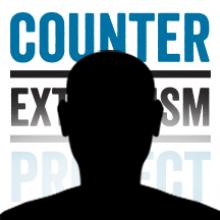
Former commander of southern Afghanistan
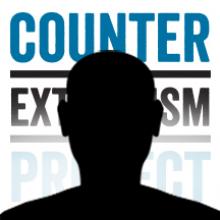
Explosives expert and former governor of Zabul Province
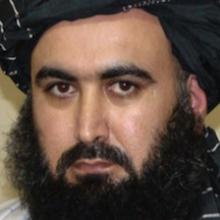
Finance minister during Taliban rule and son-in-law of Mullah Omar
Emir of Tehrik e-Taliban Pakistan (deceased)
Supreme leader of the Taliban
Former emir (deceased)
Founder; former emir and spiritual leader (deceased)
Founder of the Haqqani network (deceased)
Acting minister for refugees for the Taliban government (deceased)
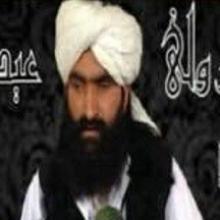
Emir of Tehrik e-Taliban Pakistan
Defense minister of the Taliban government
Co-founder, co-deputy prime minister of the Taliban government
Spokesman and propagandist
Prime Minister of the Taliban government (previous)
Co-deputy Prime Minister of the Taliban government
Minister of Finance of the Taliban government
Minister of Information and Broadcasting of the Taliban government
Economy Minister of the Taliban government
Minister of Hajj and Religious Affairs of the Taliban government
Minister of Border and Tribal Affairs of the Taliban government
Minister for minerals and petroleum of the Taliban government
Minister for water and power of the Taliban government
Minister of civil aviation and transport of the Taliban government
Minister for higher education of the Taliban government
Minister of communications of the Taliban government
Intelligence chief of the Taliban government
Reuters, August 1, 2016, http://www.reuters.com/article/us-afghanistan-blast-idUSKCN10B0WA.
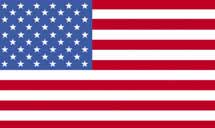

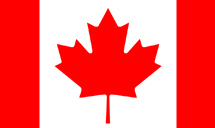
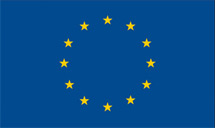
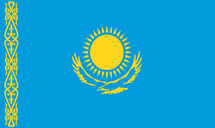
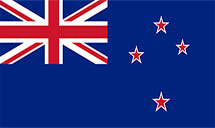
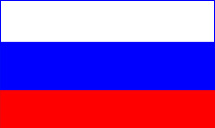
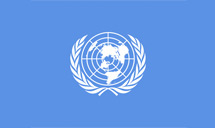

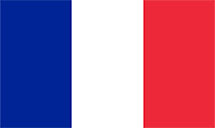
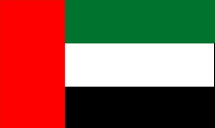
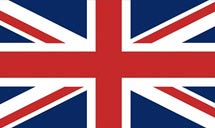

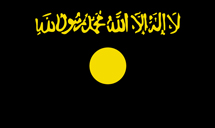
The Taliban provided a safe haven for al-Qaeda insurgents in Afghanistan prior to the September 11, 2001, terror attacks.Richard Barrett, Sajjan Gohel, Ronald E. Neumann, and Nigel Inkster, “The al-Qaeda-Taliban Nexus,” Council on Foreign Relations, November 25, 2009, http://www.cfr.org/pakistan/al-qaeda-taliban-nexus/p20838. In 1996, Osama bin Laden met with Taliban leader Mullah Omar and formally pledged his allegiance and financial backing in exchange for protection from the Taliban.Steve Coll, “Looking for Mullah Omar,” New Yorker, January 23, 2012, http://www.newyorker.com/magazine/2012/01/23/looking-for-mullah-omar.
During this time, bin Laden established al-Qaeda’s 55th Arab Brigade to fight alongside the Taliban in Afghanistan.Bill Roggio and Thomas Joscelyn, “The al-Qaeda-Taliban Connection,” Weekly Standard, July 4, 2011, http://www.weeklystandard.com/the-al-qaeda-taliban-connection/article/575548. Leaked memos from the U.S. military Joint Task Force Guantanamo describe the brigade as bin Laden’s “primary battle formation supporting Taliban objectives,” with bin Laden “participating closely in the command and control of the brigade.”Bill Roggio and Thomas Joscelyn, “The al-Qaeda-Taliban Connection,” Weekly Standard, July 4, 2011, http://www.weeklystandard.com/the-al-qaeda-taliban-connection/article/575548.
Following the U.S.-led invasion of Afghanistan in October 2001, al-Qaeda and the Taliban fled to the Federally Administered Tribal Areas (FATA) of Pakistan, where both organizations began to regroup and retool.Richard Barrett, Sajjan Gohel, Ronald E. Neumann, and Nigel Inkster, “The al-Qaeda-Taliban Nexus,” Council on Foreign Relations, November 25, 2009, http://www.cfr.org/pakistan/al-qaeda-taliban-nexus/p20838. After the 55th Arab Brigade was destroyed by coalition forces in late 2001, bin Laden and al-Qaeda rebuilt the organization as the Lashkar al Zil, or “the Shadow Army,” recruiting from jihadist groups in Pakistan.Bill Roggio and Thomas Joscelyn, “The al-Qaeda-Taliban Connection,” Weekly Standard, July 4, 2011, http://www.weeklystandard.com/the-al-qaeda-taliban-connection/article/575548.
Al-Qaeda maintained a close relationship with the Taliban following the U.S. invasion. A U.S. intelligence report acquired by Bill Roggio and Thomas Joscelyn from Guantanamo Bay described “a newly-conceived ‘unification’ of Al Qaeda and Taliban forces within Afghanistan.”Bill Roggio and Thomas Joscelyn, “The al-Qaeda-Taliban Connection,” Weekly Standard, July 4, 2011, http://www.weeklystandard.com/the-al-qaeda-taliban-connection/article/575548. The same report indicated that Mullah Omar and bin Laden “envisioned this new coalition” during a meeting in Pakistan in early spring 2003.Bill Roggio and Thomas Joscelyn, “The al-Qaeda-Taliban Connection,” Weekly Standard, July 4, 2011, http://www.weeklystandard.com/the-al-qaeda-taliban-connection/article/575548.
Guantanamo detainee Haroon al Afghan reported an August 2006 meeting during which commanders of the Taliban and al-Qaeda “decided to increase terrorist operations in the Kapisa, Kunar, Laghman, and Nangarhar provinces, including suicide bombings, mines, and assassinations.”Bill Roggio and Thomas Joscelyn, “The al-Qaeda-Taliban Connection,” Weekly Standard, July 4, 2011, http://www.weeklystandard.com/the-al-qaeda-taliban-connection/article/575548.
Despite the increasing number of drone attacks in the Pakistani tribal areas under the Obama administration, the death of bin Laden in 2011, and continued killing of many senior al-Qaeda leaders, the alliance between al-Qaeda and the Taliban is likely to endure. Both organizations have proven they are adept at reforming their structure and tactics even while weakened and vulnerable.Simon Franzen, “Unity in Terrorism,” Institute for Middle Eastern Democracy, 2012, http://instmed.org/wp-content/uploads/2012/10/Al-Qaeda-and-the-Taliban.pdf. Following the death of bin Laden in 2011, Ayman al-Zawahiri, the new emir of al-Qaeda, renewed his oath of allegiance to the leader of the Taliban.Thomas Joscelyn, “Al Qaeda Renews Its Oath of Allegiance to Taliban Leader Mullah Omar,” Long War Journal, July 21, 2014, http://www.longwarjournal.org/archives/2014/07/al_qaeda_renews_its.php. Al-Qaeda leaders have also been featured in Taliban propaganda videos, confirming the continued alliance between the two groups.Thomas Joscelyn and Bill Roggio, “Taliban rejects peace talks, emphasizes alliance with al Qaeda in new video,” Long War Journal, December 9, 2016, https://www.longwarjournal.org/archives/2016/12/taliban-rejects-peace-talks-emphasizes-alliance-with-al-qaeda-in-new-video.php.
The Taliban maintain particularly close ties with al-Qaeda in the Indian Subcontinent (AQIS), an al-Qaeda branch formed in September 2014. AQIS’s emir, Asim Omar, was a former commander in the Pakistani Taliban and reported directly to Taliban leader Mullah Mohammad Omar before the latter’s death.Bill Roggio, “Al Qaeda in the Indian Subcontinent Incorporates Regional Jihadist Groups,” Long War Journal, September 5, 2014, http://www.longwarjournal.org/archives/2014/09/analysis_al_qaeda_in.php. AQIS fights alongside the Taliban in the Afghan insurgency. AQIS published a “Code of Conduct” in June 2017, in which it reiterated its allegiance to the emir of the Taliban and revealed that its members fight “shoulder-to-shoulder” with the Taliban––and sometimes even under its banner. It also revealed that AQIS is so closely integrated with the Taliban that some AQIS members are part of the Taliban’s chain-of-command.Thomas Joscelyn, “AQIS emphasizes allegiance to Ayman al Zawahiri, Taliban in new ‘code of conduct,’” Long War Journal, June 26, 2017, https://www.longwarjournal.org/archives/2017/06/aqis-emphasizes-allegiance-to-ayman-al-zawahiri-taliban-in-new-code-of-conduct.php.
In February 2020, the Taliban reached an agreement with the United States for a U.S. troop drawdown in Afghanistan. Among other commitments, the Taliban agreed to renounce al-Qaeda and prevent al-Qaeda and other groups from using Afghanistan as a base for terrorism against the United States.Mujib Mashal, “Taliban and U.S. Strike Deal to Withdraw American Troops From Afghanistan,” New York Times, February 29, 2020, https://www.nytimes.com/2020/02/29/world/asia/us-taliban-deal.html. Nonetheless, a February 2021 U.S. Department of Defense report found the Taliban were maintaining their links to al-Qaeda.“Lead Inspector General for Operation Freedom’s Sentinel I Quarterly Report to the United States Congress I October 1, 2020 - December 31, 2020,” U.S. Department of Defense Office of Inspector General, February 12, 2021, https://www.dodig.mil/reports.html/Article/2505172/lead-inspector-general-for-operation-freedoms-sentinel-i-quarterly-report-to-th/. A May 2021 U.N. Security Council report found the Taliban maintained strong ties to al-Qaeda. The U.N. monitoring team behind the report concluded it is “impossible to assess with confidence that the Taliban will live up to its commitment to suppress any future” al-Qaeda threat in Afghanistan.“Letter dated 20 May 2021 from the Chair of the Security Council Committee established pursuant to resolution 1988 (2011) addressed to the President of the Security Council,” U.N. Security Council, June 1, 2021, 3, https://www.undocs.org/en/S/2021/486. In December 2021, U.S. Central Command commander Marine General Frank McKenzie noted al-Qaeda had grown slightly in Afghanistan since the Taliban takeover of the country that August. According to McKenzie, al-Qaeda is attempting to rebuild its base in Afghanistan.Robert Burns and Lolita C. Baldor, “US commander: Al-Qaida numbers in Afghanistan up ‘slightly,’” Associated Press, December 10, 2021, https://apnews.com/article/afghanistan-middle-east-united-states-taliban-islamic-state-group-bec82acfe6dbd19bed4c11db21d7a78e.
In a July 2022 report to the U.N. Security Council, a panel of experts monitoring sanctions against al-Qaeda and ISIS warned both groups maintain networks inside Afghanistan. The panel further warned al-Qaeda enjoys greater freedom in Afghanistan under the Taliban government but limits itself to advising and supporting the Taliban.Edith M. Lederer, “UN experts: Terrorist threat remains high in conflict areas,” Associated Press, July 19, 2022, https://apnews.com/article/islamic-state-group-technology-syria-asia-7ac84d99a4197b1b26a351dbc789a125; Rahim Faiez and Munir Ahmed, “Taliban under scrutiny as US kills al-Qaida leader in Kabul,” Associated Press, August 2, 2022, https://apnews.com/article/afghanistan-al-qaida-ayman-zawahri-middle-east-taliban-2705b6638b8389e67624ad5e62b4781c. On July 31, 2022, a CIA drone strike killed Zawahiri in Kabul’s Sherpoor area. According to U.S. President Joe Biden, Zawahiri had been staying in the house that had been targeted. The house reportedly belonged to a top aide to senior Taliban leader Sirajuddin Haqqani but the house’s exact ownership remained unclear.Matthew Lee, Nomaan Merchant, Mike Balsamo, and James Laporta, “Biden: Drone strike on al-Qaida leader delivered ‘justice,’” Associated Press, August 1, 2022, https://apnews.com/article/ayman-al-zawahri-al-qaida-terrorism-biden-36e5f10256c9bc9972b252849eda91f2; Paul P. Murphy, “Images show Kabul house where al Qaeda chief was killed by US strike,” CNN, August 2, 2022, https://www.cnn.com/2022/08/02/middleeast/ayman-al-zawahiri-strike-house-identified-intl/index.html. Taliban spokesman Zabihullah Mujahid condemned the strike as a violation of “international principles.”Idrees Ali, “Al Qaeda leader Zawahiri killed in CIA drone strike in Afghanistan - U.S. officials,” Reuters, August 1, 2022, https://www.reuters.com/world/cia-carried-out-drone-strike-afghanistan-us-officials-say-2022-08-01/.
Shortly after the Taliban assumed governance of Afghanistan in 1996, Jalaluddin Haqqani accepted an appointment as Minister of Tribal Affairs.Richard Barrett, Sajjan Gohel, Ronald E. Neumann and Nigel Inkster, “The al-Qaeda-Taliban Nexus,” Council on Foreign Relations, November 25, 2009, https://www.ctc.usma.edu/posts/the-evolution-of-iran%E2%80%99s-special-groups-in-iraq. Ever since, the Haqqani Network has been “officially subsumed under the larger Taliban umbrella organization led by Mullah Omar,” although the Haqqanis “maintain distinct command and control, and lines of operations.”“Part 3: Through the eyes of the Taliban,” Asia Times Online, May 5, 2004, http://www.atimes.com/atimes/Central_Asia/FE05Ag02.html. In 2008, Haqqani stated that “all the Mujahideen wage Jihad under the leadership of the Ameer ul-Momineen Mullah Mohammed Omar Mujahid against the American invaders and their lackeys.”“Part 3: Through the eyes of the Taliban,” Asia Times Online, May 5, 2004, http://www.atimes.com/atimes/Central_Asia/FE05Ag02.html.
In September 2012, Haqqani’s son Sirajauddin declared, “We are one of the fronts of the Islamic Emirate… and we are proud of our pledge to its Emir [Mullah Omar] and we carry out its orders and all its regulations… and we obey completely in good deeds the Emir of the Believers Mullah Muhammad Omar.”Bill Roggio, “Haqqani Network is part of the Taliban- Siraj Haqqani,” Long War Journal, October 5, 2012, http://www.understandingwar.org/report/haqqani-network. The Taliban also released a statement on its website stating that there is “no separate entity or network in Afghanistan by the name of Haqqani” and that Jalaluddin Haqqani is “a member of the Leadership Council of Islamic Emirate and is a close, loyal and trusted associate” of Mullah Omar.Bill Roggio, “Haqqani Network is part of the Taliban- Siraj Haqqani,” Long War Journal, October 5, 2012, http://www.understandingwar.org/report/haqqani-network.
Throughout the 1990s, Pakistan’s Inter-Services Intelligence (ISI) provided support and training to Mullah Omar while he organized the Taliban in Kandahar.Bruce Riedel, “Pakistan, Taliban and the Afghan Quagmire,” Brookings Institution, August 24, 2013, http://www.brookings.edu/research/opinions/2013/08/26-pakistan-influence-over-afghan-taliban-riedel.
By 2001, Pakistan was providing the Taliban regime in Kabul with hundreds of military advisers, thousands of Pakistani Pashtuns to serve in the Taliban’s infantry, and Special Services Group commandoes to help fight the Northern Alliance.Bruce Riedel, “Pakistan, Taliban and the Afghan Quagmire,” Brookings Institution, August 24, 2013, http://www.brookings.edu/research/opinions/2013/08/26-pakistan-influence-over-afghan-taliban-riedel. The ISI also facilitated the alliance between Mullah Omar and Osama bin laden prior to 9/11.Bruce Riedel, “Pakistan, Taliban and the Afghan Quagmire,” Brookings Institution, August 24, 2013, http://www.brookings.edu/research/opinions/2013/08/26-pakistan-influence-over-afghan-taliban-riedel.
Although Pakistani officials deny supporting the Taliban after 9/11, a leaked 2006 report from a British Defense Ministry think tank concluded, “Pakistan (through the ISI) has been supporting terrorism and extremism--whether in London on 7/7 [the July 2005 attacks on London's transit system], or in Afghanistan, or Iraq.”Jayshree Bajoria and Eben Kaplan, “The ISI and Terrorism: Behind the Accusations,” Council on Foreign Relations, May 4, 2011, http://www.cfr.org/pakistan/isi-terrorism-behind-accusations/p11644.
Similarly, a NATO study published in 2012 based on the interrogations of 4,000 captured Taliban, al-Qaeda, and other fighters in Afghanistan concluded that “ISI support was critical to the survival and revival of the Taliban after 2001 just as it was critical to its conquest of Afghanistan in the 1990s.”Bruce Riedel, “Pakistan, Taliban and the Afghan Quagmire,” Brookings Institution, August 24, 2013, http://www.brookings.edu/research/opinions/2013/08/26-pakistan-influence-over-afghan-taliban-riedel.
The NATO report also determined that the ISI is “thoroughly aware of Taliban activities and the whereabouts of all senior Taliban personnel.”Bruce Riedel, “Pakistan, Taliban and the Afghan Quagmire,” Brookings Institution, August 24, 2013, http://www.brookings.edu/research/opinions/2013/08/26-pakistan-influence-over-afghan-taliban-riedel. While he was alive, Mullah Omar was believed to be hiding in Quetta and Karachi under the protection of the ISI.Bruce Riedel, “Pakistan, Taliban and the Afghan Quagmire,” Brookings Institution, August 24, 2013, http://www.brookings.edu/research/opinions/2013/08/26-pakistan-influence-over-afghan-taliban-riedel.
Following the Taliban’s August 2021 takeover of Afghanistan, the Taliban expanded their military offensives against ISIS’s Afghan affiliate, ISIS-Khorasan (ISIS-K). Pakistan has since reportedly supplied the Taliban with intelligence and technical support to fight ISIS-K. A senior Taliban leader told the Washington Post Pakistan is aiding the Taliban in monitoring phone and Internet communications, as well as passing the Taliban raw intelligence.Susannah George, Joby Warrick, and Karen DeYoung, “Pakistan using informal intelligence channels to prop up Taliban fight against ISIS,” Washington Post, October 23, 2021, https://www.washingtonpost.com/world/2021/10/23/afghanistan-isis-pakistan-intelligence/.
In January 2012, the Taliban announced their agreement to open an office in Doha, Qatar. Western observers viewed the decision as a sign of the Taliban’s possible willingness to enter formal talks with the West.Matthew Rosenberg, “Taliban Opening Qatar Office, and Maybe Door to Talks,” New York Times, January 3, 2012, http://www.nytimes.com/2012/01/04/world/asia/taliban-to-open-qatar-office-in-step-toward-peace-talks.html. The U.S. government reportedly approved the move in 2011.Nick Amies, “US endorses Taliban office in Qatar in bid to bolster talks,” Deutsche-Welle, September 16, 2011, http://www.dw.com/en/us-endorses-taliban-office-in-qatar-in-bid-to-bolster-talks/a-15392674. The Taliban opened its Doha office, the group’s first overseas, in June 2013.Agence France-Presse, “Afghan peace in 6 months: Zardari, Karzai set an ambitious target,” Express Tribune (Karachi), February 5, 2013, http://tribune.com.pk/story/502839/afghan-peace-in-6-months-zardari-karzai-set-an-ambitious-target/; “Q&A: Afghan Taliban open Doha office,” BBC News, June 20, 2013, http://www.bbc.com/news/world-asia-22957827. In 2017, a Taliban official told Al Jazeera that Qatar played a significant role in initiating peace talks between the terror group and Afghanistan by allowing the group to open its Doha office.Shereena Qazi, “Afghan Taliban: Qatar plays major role in peace talks,” Al Jazeera, August 1, 2017, http://www.aljazeera.com/news/2017/08/afghan-taliban-qatar-plays-major-role-peace-talks-170801082357391.html.
In July 2017, the New York Times revealed 2011 e-mails between Yousef al-Otaiba, the United Arab Emirates’ ambassador to the United States, and the UAE foreign ministry showing that the UAE had sought to host the Taliban office instead of Qatar.David D. Kirkpatrick, “Persian Gulf Rivals Competed to Host Taliban, Leaked Emails Show,” New York Times, July 31, 2017, https://www.nytimes.com/2017/07/31/world/middleeast/uae-qatar-taliban-emails.html. Otaiba responded the following month in a letter-to-the-editor alleging that the UAE had insisted the Taliban first renounce its ties to al-Qaeda before opening an office in its country. According to Otaiba, the Taliban refused and Qatar made no similar demand of the group.Yousef al-Otaiba, “The United Arab Emirates and the Taliban,” New York Times, August 9, 2017, https://www.nytimes.com/2017/08/09/opinion/the-united-arab-emirates-and-the-taliban.html.
In December 2016, the Taliban demanded direct talks with the United States and official recognition of its Doha office as a political office.Ayaz Gul, “Taliban Seeks Recognition for Qatar Office, Direct Talks With US,” Voice of America, December 8, 2016, https://www.voanews.com/a/taliban-seeks-recognition-for-qatar-office-direct-talks-with-us/3628179.html. In February 2017, Afghan President Ashraf Gani met with Qatari Foreign Minister Mohammed bin Abdulrahman Al Thani and demanded the closure of the Taliban’s Doha office until the group ceased its violent activities in Afghanistan.Abdul Wali Arian, “Taliban’s Qatar Office Should Be Closed: Ghani,” Tolo News, February 20, 2017, http://www.tolonews.com/afghanistan/taliban%E2%80%99s-qatar-office-should-be-closed-ghani.
Qatar has since hosted negotiations between the United States and the Taliban to reach an end to the war in Afghanistan that started in 2001. On December 7, 2019, Doha hosted a new round of peace talks between the United States and the Taliban. These negotiations between the U.S. peace envoy Zalmay Khalilzad and Afghanistan’s Taliban were the first talks between the two camps since U.S. President Donald Trump withdrew from the dialogue in September.Kathy Gannon, “US opens first round of resurrected peace talks with Taliban,” Associated Press, December 7, 2019, https://apnews.com/26b7d5ad331f40502fd3373005d99f17; Ayaz Gul, “Taliban-US Afghan Peace Talks Stall Again,” Voice of America, February 1, 2020, https://www.voanews.com/south-central-asia/taliban-us-afghan-peace-talks-stall-again. On February 29, 2020, following an agreed seven-day reduction in violence period, U.S. and Taliban representatives meeting in Doha signed an agreement for a U.S. troop withdrawal. The United States agreed to draw its forces down from 13,000 to 8,600 in the next three to four months, with the remaining U.S. forces withdrawing in 14 months. In exchange, the Taliban agreed to renounce al-Qaeda and prevent al-Qaeda and other groups from using Afghanistan as a base for terrorism against the United States. The U.S. troop drawdown is dependent on the Taliban maintaining its commitments. The agreement also called for permanent ceasefire and power-sharing talks that March between Afghan militant groups as well as between the Taliban and the Afghan government.Asad Hashim, “Pakistan warns US of ‘spoilers’ on US-Taliban deal in Afghanistan,” Al Jazeera, March 1, 2020, https://www.aljazeera.com/news/2020/03/pakistan-warns-spoilers-taliban-deal-afghanistan-200302093650382.html; Matthew Lee and Kathy Gannon, “US and Taliban sign deal aimed at ending war in Afghanistan,” Associated Press, February 29, 2020, https://apnews.com/491544713df4879f399d0ff5523d369e.
In April 2017, U.S. General John Nicholson, who commands U.S. forces in Afghanistan, said the U.S. military had received reports that Russia is arming the Taliban. Other U.S. military officials corroborated the reports and said that Russia had increased its supply of small arms to the Taliban in the past 18 months. Russia denied the allegations.Thomas Gibbons-Neff, “Russia is sending weapons to Taliban, top U.S. general confirms,” Washington Post, April 24, 2017, https://www.washingtonpost.com/news/checkpoint/wp/2017/04/24/russia-is-sending-weapons-to-taliban-top-u-s-general-confirms/?utm_term=.1b3e9c11fe7a. A Taliban video released in late July 2017 claimed that the Russian government has provided the terrorist group with snipers, heavy machine guns, and other weapons.Nick Patton Walsh and Masoud Popalzai, “Videos suggest Russian government may be arming Taliban,” CNN, July 26, 2017, http://edition.cnn.com/2017/07/25/asia/taliban-weapons-afghanistan/index.html. Nicholson has previously criticized Russia for providing “legitimacy” to the Taliban.Thomas Gibbons-Neff, “Russia is sending weapons to Taliban, top U.S. general confirms,” Washington Post, April 24, 2017, https://www.washingtonpost.com/news/checkpoint/wp/2017/04/24/russia-is-sending-weapons-to-taliban-top-u-s-general-confirms/?utm_term=.1b3e9c11fe7a.
Taliban officials claim that the group has had prominent contacts with Russia since at least 2007, but that Russia’s role with respect to the Taliban does not go beyond “moral and political support.”Phil Stewart and Idrees Ali, “Russia May Be Helping Supply Taliban Insurgents: U.S. General,” Reuters, March 23, 2017, http://www.reuters.com/article/us-usa-afghanistan-russia-idUSKBN16U234. In December 2016, Afghan officials accused Russian of providing—mostly—political support to the Taliban. Russia’s ambassador to Afghanistan, Alexander Mantytskiy, denied “intensive contacts” with the Taliban and claimed that his country’s engagement with the group was aimed solely at protecting Russians in Afghanistan and furthering peace talks between the Taliban and the Afghan government. Nonetheless, Afghan and U.S. security officials called Russian contacts with the Taliban a “dangerous new trend” that gives Russia “malign influence” in Afghanistan.Hamid Shalizi and Josh Smith, “Ties between Russia and the Taliban worry Afghan, U.S. officials,” Reuters, October 7, 2016, http://www.reuters.com/article/us-afghanistan-russia/ties-between-russia-and-the-taliban-worry-afghan-u-s-officials-idUSKBN13W2XJ.
Formal ties between the Taliban and Russia were further revealed in 2024. On April 1, 2024, Zamir Kabulov, the special presidential representative for Afghanistan and director of the foreign ministry’s Second Asia Department, asserted that the Kremlin and the Afghan Taliban regularly coordinated on counterterrorism issues, though he did not elaborate. The following day, on April 2, Kremlin spokesman Dmitry Peskov announced that the Kremlin was reportedly in the process of removing the Taliban from its list of banned terrorist organizations. Peskov stated that given Afghanistan’s proximity to Russia, it is important for the two nations to maintain communication to resolve security challenges affecting both Moscow and Kabul. Cooperation between the two camps was further strengthened when Russia invited the Taliban to participate in its May 2024 “Russia-Islamic World: Kazan Forum” and the June 2024 St. Petersburg International Economic Forum. “Russia says it is working on removing Taliban from its terrorist list,” Reuters, April 2, 2024, https://www.reuters.com/world/europe/russia-says-it-is-working-removing-taliban-its-terrorist-list-2024-04-02/; “Following Moscow ISIS Attack, Russia Pursues Anti-Terrorism Cooperation With Afghan Taliban Government, Moving To Remove The Organization From Terror List,” Middle East Media Research Institute, April 10, 2024, https://www.memri.org/reports/following-moscow-isis-attack-russia-pursues-anti-terrorism-cooperation-afghan-taliban#_edn2.
Saudi Arabia maintained diplomatic and financial ties to the Taliban when the group controlled the Afghan government in the 1990s. In 1998, the Taliban rejected a Saudi demand to deport Osama bin Laden.Judith Miller and James Risen, “Backed by U.S., Saudis Seek Afghan Ouster of Bin Laden,” New York Times, October 18, 1998, http://www.nytimes.com/1998/10/18/world/backed-by-us-saudis-seek-afghan-ouster-of-bin-laden.html. Nonetheless, Saudi Arabia maintained its relationship with the Taliban government until its overthrow in 2001.Carlotta Gall, “Saudis Bankroll Taliban, Even as King Officially Supports Afghan Government,” New York Times, December 6, 2016, https://www.nytimes.com/2016/12/06/world/asia/saudi-arabia-afghanistan.html.
After the fall of the Taliban government, Saudi Arabia became a source of private funding for the Taliban. Former Taliban Finance Minister Agha Jan Motasim told the New York Times that after the Taliban fell from power in 2001, he would frequently travel from Pakistan to Saudi Arabia to raise money as the Taliban regrouped. Motasim claimed he traveled to Saudi Arabia two to three times a year from 2002 to 2007 to raise money from foundations, wealthy Saudis, and other individuals who traveled to the country on pilgrimage to Mecca. Motasim also claimed that Saudi Arabia provided the only location where he could meet with donors from other countries. In 2009, then-Secretary of State Hillary Clinton called Saudi Arabia the “most significant source of funding to Sunni terrorist groups worldwide.”Carlotta Gall, “Saudis Bankroll Taliban, Even as King Officially Supports Afghan Government,” New York Times, December 6, 2016, https://www.nytimes.com/2016/12/06/world/asia/saudi-arabia-afghanistan.html; “TERRORIST FINANCE: ACTION REQUEST FOR SENIOR LEVEL ENGAGEMENT ON TERRORISM FINANCE,” WikiLeaks, December 30, 2009, https://wikileaks.org/plusd/cables/09STATE131801_a.html. Former Saudi intelligence chief Prince Turki al-Faisal denied that his government provided any support for the Taliban.Carlotta Gall, “Saudis Bankroll Taliban, Even as King Officially Supports Afghan Government,” New York Times, December 6, 2016, https://www.nytimes.com/2016/12/06/world/asia/saudi-arabia-afghanistan.html.
Saudi Arabia reportedly sought to host the Taliban’s political office before Qatar, according to Abdullah Anas, a former mujahideen fighter with ties to Osama bin Laden who laid early groundwork for the Afghan peace process. With the alleged support of Afghan President Hamid Karzai and Saudi intelligence, Anas traveled between Saudi Arabia and Afghanistan between 2006 and 2008 in an attempt to launch a dialogue that included the Taliban.“Saudi Arabia and UAE ‘tried to host’ Taliban first,” Al Jazeera, August 12, 2017, http://www.aljazeera.com/news/2017/08/saudi-arabia-uae-host-taliban-170812171821732.html; David Hearst, “Saudi Arabia tried to host Taliban office, says former mujahidin,” Middle East Eye, August 11, 2017, http://www.middleeasteye.net/news/saudi-arabia-failed-bid-host-taliban-office-says-former-mujaheddin-qatar-uae-719884153.
Get the latest news on extremism and counter-extremism delivered to your inbox.